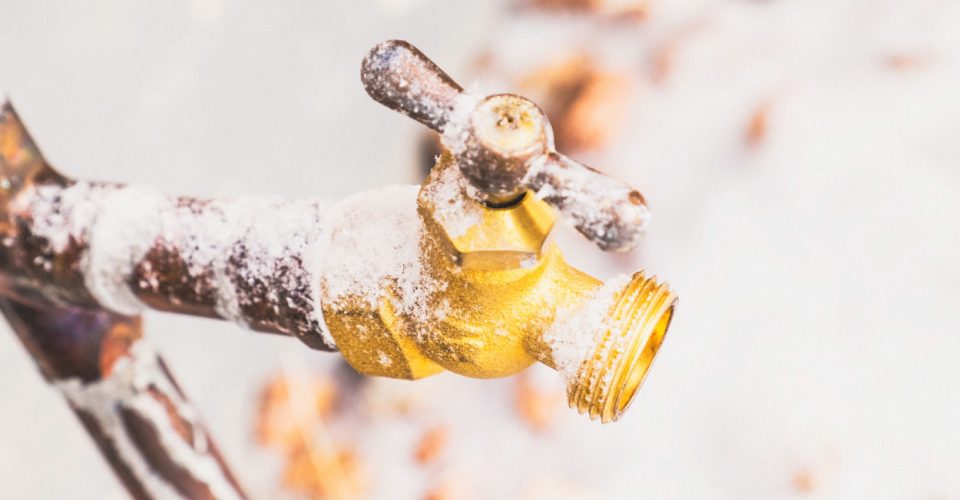How to Prepare Your Plumbing For Cold Weather
Winter will soon be upon us, bringing icy cold temperatures. These temperatures can mean new challenges for homeowners, with one of the most common plumbing issues at this time of year being frozen pipes.
When water inside your pipes freezes, it can lead to the pipes bursting, causing water damage and costly repairs. A severe problem could lead to flooding and the need for some emergency plumbing – even in the middle of the night!
Fortunately, there are several preventative measures you can take to protect your pipes from the coming freezing temperatures, so read on for our tips…

Insulate Your Pipes
Insulating your pipes is one of the most effective ways to ensure your pipes won’t be subject to freezing this winter. You can apply insulation solutions to both exposed pipes outside your home, and those inside your home. It’s important to insulate pipes in indoor areas that remain unheated most of the time, such as lofts or basement areas.
When it comes to insulation materials, there are various options for pipes. These options include foam sleeves, fiberglass wrap, and heat tape.
Insulating your pipes properly will help to maintain a consistent temperature and avoid them from becoming too cold and susceptible to freezing.
Seal Any Cracks and Gaps In Your Home
Inspecting your home for any gaps or cracks in the walls, floors, or foundation will not only protect your pipes, but it will keep you warm and can save on your heating usage and bills too! So as you can see, it’s massively important to do this.
It’s surprising how much difference that these openings can make, allowing cold air and draughts to enter your home – or your heated air to escape via these cracks and gaps.
Once you’ve identified some gaps, seal them up with caulking, insulation, and other suitable materials found from a specialist store. Pay extra special attention to gaps and cracks in areas near to where your pipes are in order to protect them from freezing.
Maintain a Good Level of Heating In Your Home
Now that you’ve sealed cracks and gaps, as above, you’ll be able to maintain a good level of heating in your home. This will allow you to further protect pipes and prevent any freezing from occurring.
Remember to keep a consistent heating level in your property, and don’t allow it to become too cold for too long, as this is what can risk freezing. This is important to consider even if you’re not in the property, whether you’ve gone on a winter holiday or are just out working or socialising for extended hours.
This doesn’t mean you have to have the heat cranked up all the time however, as obviously we understand that sort of thing is expensive. Just set a timer or use a smart thermostat and mobile phone app, the recommended minimum temperature for the prevention of frozen pipes is around 13°C. It’s mainly about not letting temperatures drop for extended periods.
Let Your Taps Drip or Run Regularly
Allowing your taps to drip slowly during freezing weather, or running water from these taps regularly will help prevent frozen pipes. You don’t want to let any of your pipes and taps go unused for long periods of time during the winter, especially external pipes such as your hose line.
Moving or running water is less likely to be prone to freezing. Letting both hot and cold taps drip slightly will relieve pressure, which also helps prevent freezing.
Don’t Forget to Open Cabinet Doors
In areas where your pipes and plumbing are located inside cabinets, such as under your kitchen or bathroom sink, open those cabinets occasionally in order to allow warm air to circulate around the pipes for a bit.
This is especially helpful if your kitchen or bathroom gets particularly cold when they are not in use. Exposure to warm indoor air will reduce the chance of freeze ups occurring.
What To Do If You Do Experience A Frozen or Burst Pipe
Signs of a frozen pipe will be similar to the signs of a blocked pipe, so if you notice slow draining, noises, or low water pressure, you could have either problem. Try to reduce your usage until you think you’ve fixed the problem, or else you run the risk of making it worse and leading to a burst pipe. Pouring hot water down your sink may help.
It’s essential to know where your main water shut off valve is, so in case of an emergency, such as flooding, or a burst pipe, you can quickly shut off water and minimise the damage.
You may then need to arrange an appointment with a plumber as soon as possible or call an emergency plumber out.

